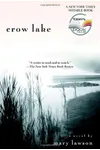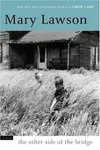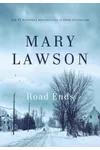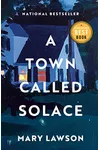Picture a Canadian storyteller who weaves the quiet beauty of rural life into unforgettable tales—meet Mary Lawson! Born in 1946 in a small Ontario farming community, Lawson’s novels, like the bestselling Crow Lake and Booker Prize-nominated The Other Side of the Bridge, capture the heart of human relationships with a gentle yet piercing touch. Her stories, set against the rugged Northern Ontario landscape, have charmed readers worldwide with their emotional depth and vivid characters.
The Making of Mary Lawson
Mary Lawson grew up in Blackwell, Ontario, surrounded by fields and forests that would later inspire her fictional settings. A distant relative of Anne of Green Gables author L.M. Montgomery, she was steeped in a love for storytelling. After earning a psychology degree from McGill University in 1968, Lawson moved to England, where she worked as an industrial psychologist and married Richard Mobbs, a British psychologist. Her summers in Muskoka—Ontario’s 'Cottage Country'—sparked her fascination with the stark beauty of the Canadian Shield, which became the backdrop for her novels.
Lawson didn’t start writing seriously until her children were in school. She began with short stories for women’s magazines, but a nudge from an editor to expand one into a novel changed everything. At 50, she began crafting Crow Lake, a process that took years of dedication. Her late start only deepened her craft, proving it’s never too late to chase a dream.
Mary Lawson’s Unforgettable Stories
Lawson’s debut, Crow Lake (2002), is a tender tale of family and loss in a remote Ontario community. It follows Kate Morrison, who grapples with her past after her parents’ tragic death. The novel’s emotional resonance earned it the McKitterick Prize and a spot on The New York Times bestseller list. The Other Side of the Bridge (2006), longlisted for the Man Booker Prize, explores sibling rivalry and love against the backdrop of World War II, blending past and present with masterful pacing.
Road Ends (2013) dives into the unraveling of the Cartwright family, with a frozen Northern Ontario landscape mirroring their struggles. Her latest, A Town Called Solace (2021), another Booker longlistee, weaves a poignant story of a missing teenager and a grieving neighbor, earning praise from Anne Tyler for its emotional radiance. Lawson’s style—simple yet intricate—captures the comedy and tragedy of small-town life, drawing comparisons to Alice Munro and Elizabeth Strout.
Her novels, all set in the fictional towns of Struan and Crow Lake, reflect her knack for creating intimate, character-driven dramas. Lawson’s psychology background shines through in her nuanced portrayal of human emotions, making her stories both relatable and profound.
Why Mary Lawson Matters
Mary Lawson’s work has left a quiet but powerful mark on literary fiction. Her ability to turn the ordinary lives of rural Canadians into universal stories of love, loss, and resilience has won her fans like Graham Norton and Anne Tyler. Translated into 28 languages, her books resonate globally, proving that small-town tales can have a big impact. Her late-blooming career also inspires aspiring writers, showing that talent can shine at any age.
Lawson’s Northern Ontario settings have carved out a literary niche—some call it 'Lawson Country'—where the landscape is as much a character as the people. Her stories remind us that even in the quietest corners of the world, human hearts beat with extraordinary stories.
About Mary Lawson
- Born: 1946 in Blackwell, Ontario, Canada
- Key Works: Crow Lake, The Other Side of the Bridge, Road Ends, A Town Called Solace
- Awards: McKitterick Prize (2003), Booker Prize longlist (2006, 2021)
- Fun Fact: She’s a distant relative of L.M. Montgomery, author of Anne of Green Gables.
Snag Crow Lake or A Town Called Solace and dive into Mary Lawson’s heartfelt literary world! Her stories are like a warm cup of tea on a chilly Ontario evening—comforting, deep, and impossible to put down.



